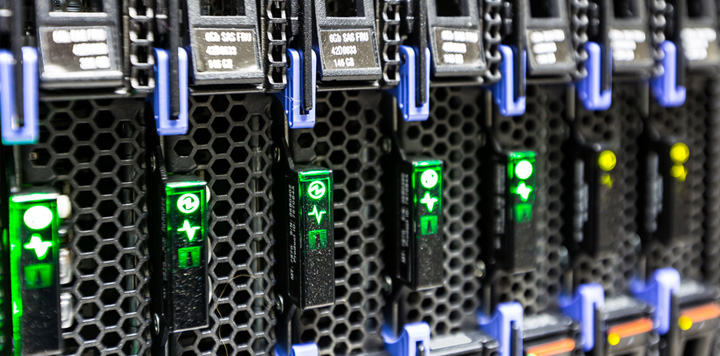Understanding Software-Defined Networking

It’s here, it’s delivering real business benefits, and it isn’t going away. Software-Defined Networking (SDN) is changing the way that we think about networks altogether, making them more flexible and efficient. But what is it, and how can you use it?
Moving Away From Traditional Network Controls
 In traditional networking, the hardware—the switches and routers that handle the network data—do two things:
In traditional networking, the hardware—the switches and routers that handle the network data—do two things:
1. They handle the data plane
This is the layer that transports the network data where it needs to go. If your LAN was a rail network, this would be the trains that shuttled cargo and passengers along.
2. They handle the control plane
This is the layer that describes how and where the network sends the data. In a train network, think of the control plane as the signalling and junction switching that route the trains down one track or another.
In a LAN, the control plane is effectively the forwarding table, traditionally housed in the switch or router. Keeping this layer in the networking hardware makes it difficult for network administrators to make decisions about traffic flow.
Network hardware interfaces are proprietary and vary between pieces of equipment. As network infrastructures get larger and more complex, it becomes less viable to change their traffic flows. SDN provides a way to manage things more flexibly.
In SDN, the network hardware still handles the data plane, but the control plane moves into software. This lets network administrators control the flow of traffic from a central administrative console, enabling them to move the traffic signals to accommodate changes in the network.
SDN is gaining real traction, especially among larger organizations. IDC predicts that by 2018, half of all multinational corporations will use SDN-based services. They are embracing it because of the new capabilities it brings to network management.
The Benefits of SDN
 One example is service quality. Just as you might want to delay a cargo shipment to let passenger trains through first and then route that passenger train around a flooded track, so you might want to change the flow for your sales application as the quarterly reporting period approaches, improving its performance for staff.
One example is service quality. Just as you might want to delay a cargo shipment to let passenger trains through first and then route that passenger train around a flooded track, so you might want to change the flow for your sales application as the quarterly reporting period approaches, improving its performance for staff.
SDN makes it possible to change the network configuration easily. Let’s say you wanted to segment one part of your network from another. Normally, you’d do that in the switch. SDN enables you to do it in the management console, making it easy to do many times. This becomes useful in applications such as microsegmentation, where you segment many parts of the network from each other to increase security.
By defining network control in software, SDN also allows you to scale your network management more easily. Instead of a single network engineer controlling a couple of hundred switches, they could potential manage thousands from a single pane of glass.
The ability to allocate network bandwidth to applications more dynamically makes it possible for network administrators to use their network capacity more effectively, serving more traffic volume without having to invest in more network capacity. For large enterprises, this could generate significant efficiencies.
So, SDN effectively recasts your network in software.
Programming Your SDN
A common language for controlling SDN networks is OpenFlow, from the Open Network Foundation. Equipment and management software that support this standard can work in unison as part of a larger SDN-based network management ecosystem.
Moving to an SDN Environment
 To do this, you’ll need to invest in capable equipment. Very large organizations such as cloud hosters and very large enterprises might find lower-cost, white box switches appropriate, but most companies will need branded SDN-capable network equipment from a reputable vendor.
To do this, you’ll need to invest in capable equipment. Very large organizations such as cloud hosters and very large enterprises might find lower-cost, white box switches appropriate, but most companies will need branded SDN-capable network equipment from a reputable vendor.
You don’t have to rip out and replace a traditional network entirely to deploy SDN. In many cases, companies can use a hybrid model, implementing it only where it makes sense. This takes careful planning, and an understanding of what you hope to achieve using the technology.
Ensuring service continuity is likely to be a key concern when you do move over, making careful planning a priority.
SDN is still a work in progress and new to many organizations. It promises next-generation network platforms to support the kinds of applications and services that companies will need to deliver in future. It isn’t something to be entered into lightly, as you’re changing the very fabric of your organization. Get it right, though, and it could supercharge your entire IT ecosystem.
Danny Bradbury has been a technology journalist since 1989. He writes for titles including the Guardian newspaper, and Canada’s National Post. Danny specialises in areas including cybersecurity, and also cryptocurrency. He authors the About Bitcoin website, and also writes a regular blog on technology for children called Kids Tech News. You can follow Danny on Twitter® at @DannyBradbury
To find out more about how SolarWinds MSP can help you manage and control your networks, click here.
© 2017 SolarWinds MSP UK Ltd. All rights reserved.
Want to stay up to date?
Get the latest MSP tips, tricks, and ideas sent to your inbox each week.
